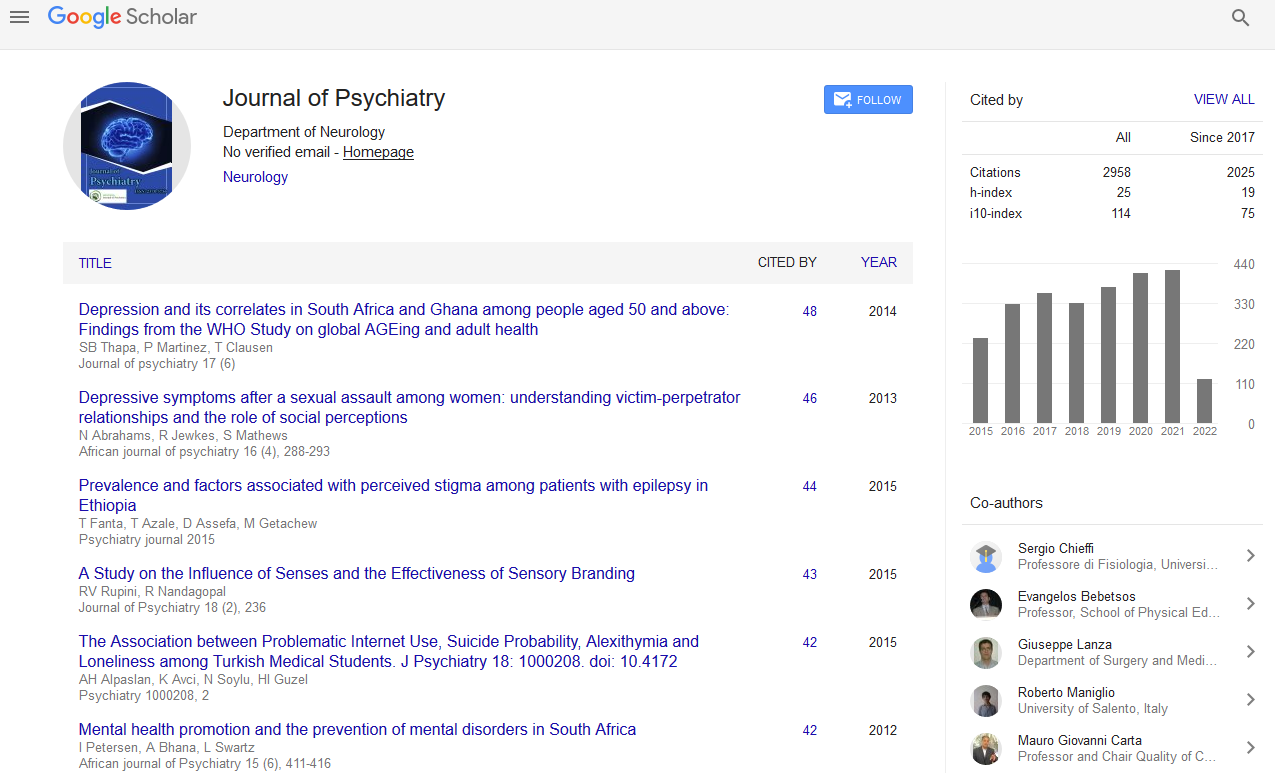PMC/PubMed Indexed Articles
Indexed In
- RefSeek
- Hamdard University
- EBSCO A-Z
- OCLC- WorldCat
- SWB online catalog
- Publons
- International committee of medical journals editors (ICMJE)
- Geneva Foundation for Medical Education and Research
Useful Links
Share This Page
Open Access Journals
- Agri and Aquaculture
- Biochemistry
- Bioinformatics & Systems Biology
- Business & Management
- Chemistry
- Clinical Sciences
- Engineering
- Food & Nutrition
- General Science
- Genetics & Molecular Biology
- Immunology & Microbiology
- Medical Sciences
- Neuroscience & Psychology
- Nursing & Health Care
- Pharmaceutical Sciences
Abstract
Magnitude and Associated Factors of Delirium among Hospitalized Patients, Ethiopia: A Cross Sectional Study
Tesfa Mekonen, Getnet Mihretie, Dereje Assefa, Wubalem Fekadu and Yohannes Mehretie
Background: Delirium is an acute onset of fluctuating cognitive impairment and disturbance of consciousness. Its prevalence ranged from 10% to 85% across different hospital settings. Even though delirium is with significantly high prevalence and has negative sequel on the hospitalized patients, its recognition and management is poorly practiced. So this study was aimed to assess magnitude and associated factors of delirium among St. Paul’s Hospital Millennium Medical College inpatients.
Methods: Institution based cross sectional survey was conducted among 423 St. Paul’s Hospital Millennium Medical College inpatients selected by systematic random sampling from April 25 to May 25, 2014. A pretested and interviewer administered questionnaire was used for data collection. Descriptive statistics was used to describe the study population in relation to relevant variables. Bivariate and multivariate logistic regression was also carried out to see the effect of each independent variable on the dependent variable.
Result: The prevalence of delirium was found to be 16.6%. Being age of ≥ 60 years (AOR=7.8, 95% CI: 3.1, 19.5), having visual impairment (AOR=3.4, 95%CI: 1.3, 8.9), poly therapy (AOR=2.4, 95% CI: 1.2, 4.6) and benzodiazepine exposure (AOR=11.3, 95% CI: 4.9, 25.8) were positively associated with delirium.
Conclusion: Delirium was high among St, Paul’s Hospital Millennium Medical College inpatients. Older age, poly therapy, benzodiazepine exposure, visual impairment and current use of alcohol were factors associated with delirium. Strict controlling and monitoring modifiable factors are necessary to minimize its consequence.


